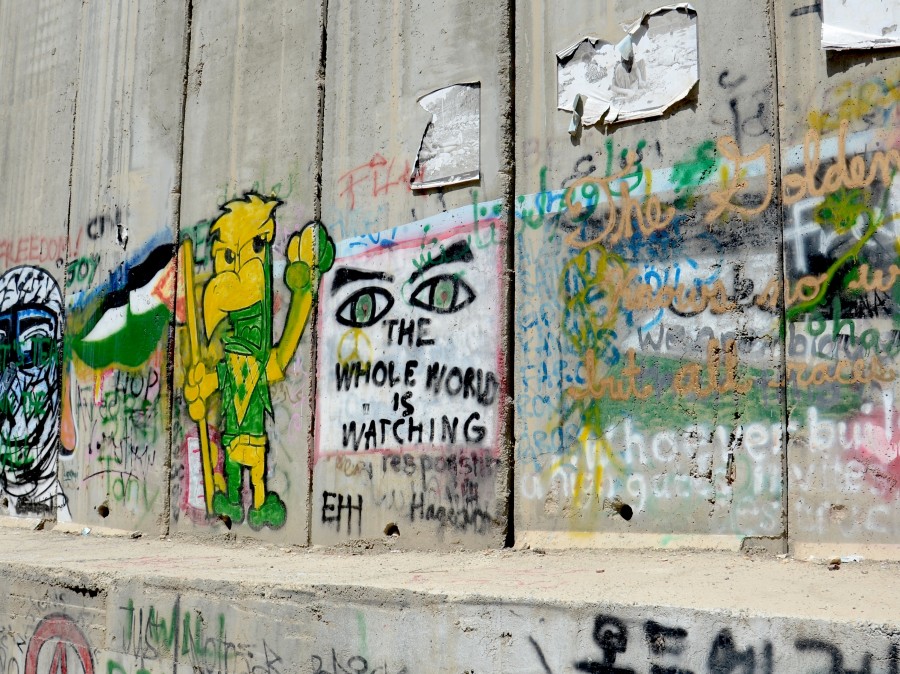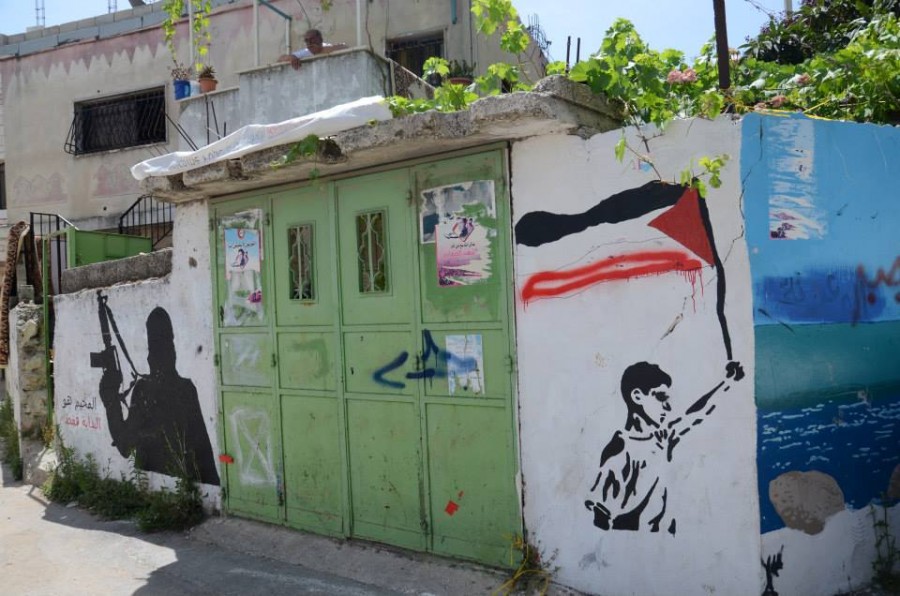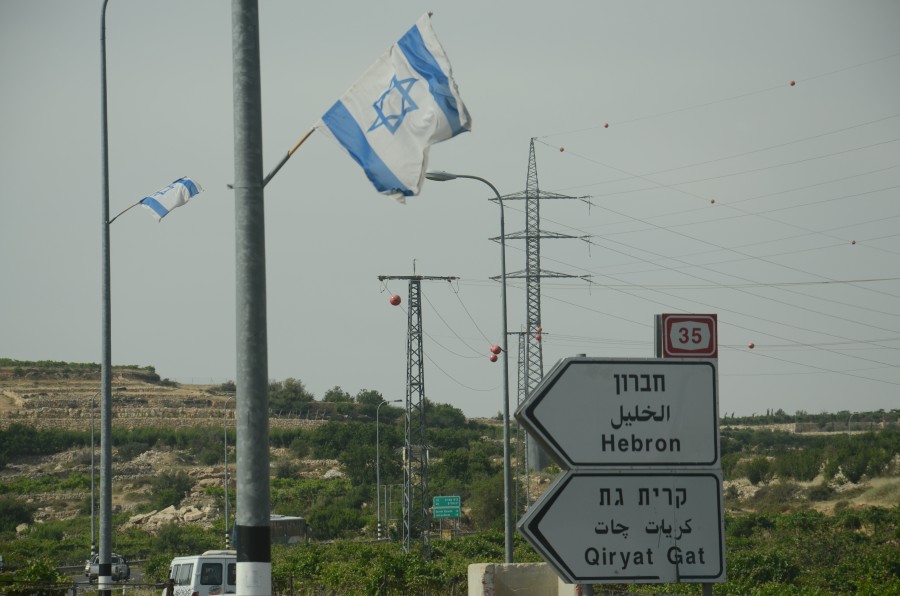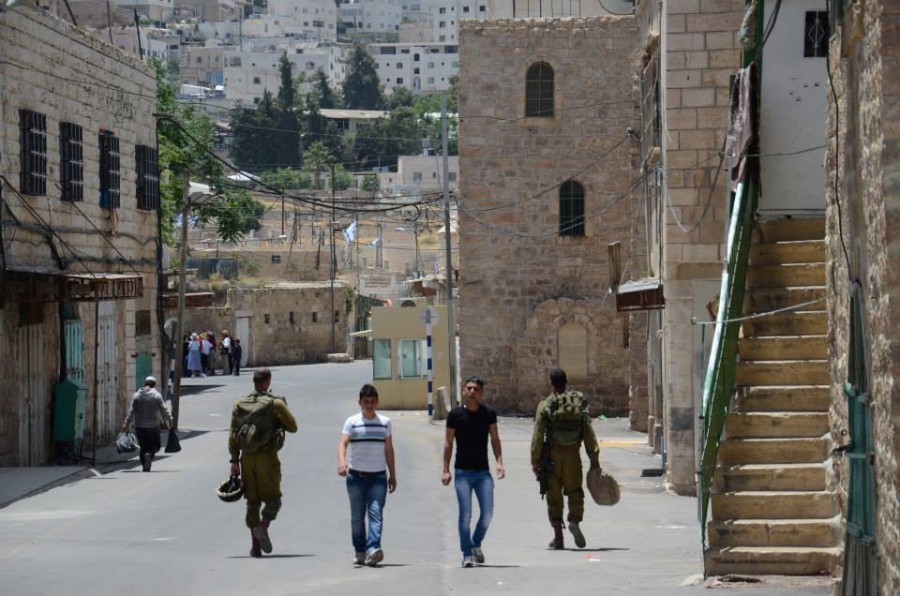Introducing Palestine: The West Bank In A Day

The Israeli separation wall slopes up into blue sky. I stand in the shadow it casts, dwarfed by its manmade slap of division.
My friend Yuan emerges from the makeshift gift shop clutching a handful of postcards. He is particularly pleased with the purchase depicting the now iconic image of a silhouette of a young girl sailing over the partition with a handful of balloons, attributed to the political artist Banksy.
We can also buy a can of spray paint, Yuan tells me, in case we want to leave our own messages of solidarity with the people of Palestine.
And evidently, many visitors have chosen to do just that, the once grey concrete now a defiant mosaic of graffiti. Beneath the glare of military watchtowers, I adjust my camera lens, zooming in on one message scrawled between the declarations of solidarity and hope: “The whole world is watching,” it reads.
Despite the consistent trickle of people who come to experience something of the reality of life within the territories, however, one can’t help but feel that this is probably not the case. The gaze of the international media focusing only sporadically on this increasingly tiny piece of land known as Palestine (“Palestine” depending on who you speak to, of course).
We are just outside Bethlehem, a place whose biblical status had already given it a special place in my imagination and later we will visit the place Christians consider the birthplace of Jesus Christ. But one does not have to look far for evidence of the conflict that now mars the region.
Across the valley from this holy town, an Israeli settlement is clearly visible, large modern houses and glittering swimming pools declaring it separate from the surrounding countryside.
The scrubland in between is littered with barbed wire, leftover from the military appropriation of farmland so that these luxurious enclaves could exist and expand. A warm breeze gently rustles the discarded plastic bags snagged on the discarded barbs as our guide explains his version of the region’s history.
He is a young Arab guy called Mohammed. We had met up with him after passing through the Bethlehem checkpoint as he, like most Palestinians, is prohibited from entering Jerusalem, which is where the tour had begun.

Mohammed makes his political position clear from the outset: he believes a two-state solution is both desirable and possible. Green Olive Tours, the organization for which he works, is a small grassroots initiative which is hoping to facilitate tolerance and understanding on both sides.
Green Olive is a different kind of Israeli company that works very closely with its Palestinian partners. They claim to offer an experience that is “informative and analytical, covering the history, culture, and political geography of Palestine (West Bank) and Israel” and have been acclaimed by the likes of Lonely Planet and Al Jazeera for delivering a unique and important experience.
They provide a number of itineraries, including a 10-day “Palestinian Immersion.” Due to time restrictions, we had chosen the day option, incorporating Abraham’s Tomb, the Church of the Nativity and a refugee camp, as well as the two largest Palestinian cities in the southern part of West Bank: Bethlehem and Hebron.

It was in Hebron we had lunch with a local family. Situated amongst the Judean mountains, it is the largest city in the West Bank, and it is here the impact of the Israeli presence was even more explicit. It used to be a hub of thriving trade and, indeed, some of the marketeers who remember that era still remain. Yet according to those now peddling their wares to the few tourists that cross into the West Bank, these dusty passages hold now only an echo of the place it once was.
Kids run weave between us as we explore the maze of small streets, offering us bracelets calling for a “Free Palestine.” Above the canopies of the shops we pass, a wire mesh has been erected, the trash and rocks it has collected blocking light from reaching the people below. According to the shopkeepers, this wire protects them from the debris showered upon them by the settlers are being paid to live here.
The decision to bring in Israelis is a strategic move on behalf of the government, the shopkeepers explain. They argue it allows the government to carve out pockets within the Palestinian community, serving as justification for the presence of additional Israeli soldiers, preventing the locals from entering parts of their city and making the establishment of a future Palestinian state less likely.

Yet despite the frustration and ritual humiliation the people who live in the occupied lands of the West Bank endure, there was a sense from those we met that they would not give up the possibility of a peaceful resolution. Indeed, the tour did not feel like an opportunity to lampoon “all the Israelis,” but an intelligent and thought-provoking insight into a place sometimes difficult to imagine beyond the headlines.
*
If you are visiting the West Bank, here are a couple of practical tips:
- There is no airport in the West Bank so you have to access it through Israel. The nearest airport is Tel Aviv.
- You will need to carry your passport with you at all times while in the occupied territories. There are numerous checkpoints and you will have to prove your nationality.
- When you are in public please dress similarly to the host population. Be especially sensitive in conservative Muslim or Jewish areas, or when visiting religious sites.
- In general tourists should not walk around Palestinian cities by themselves at night, especially when there have been Israeli military incursions, except when escorted by a Palestinian guide or friend.
- You can take Palestinian buses and service (shared) taxis from Damascus gate in Jerusalem to most cities in the West Bank. It’s fine to take a Palestinian transport if you want to venture off the beaten track.

/
 A restless Brit with big dreams and limited cash flow, Hannah is a freelance journalist and student. She is currently being sponsored by the European Union to take a Masters in Journalism and International Politics at the University of Amsterdam/University of Santiago, Chile, and the Danish School of Journalism. Check out her site DontDoNothing.com.
A restless Brit with big dreams and limited cash flow, Hannah is a freelance journalist and student. She is currently being sponsored by the European Union to take a Masters in Journalism and International Politics at the University of Amsterdam/University of Santiago, Chile, and the Danish School of Journalism. Check out her site DontDoNothing.com.
